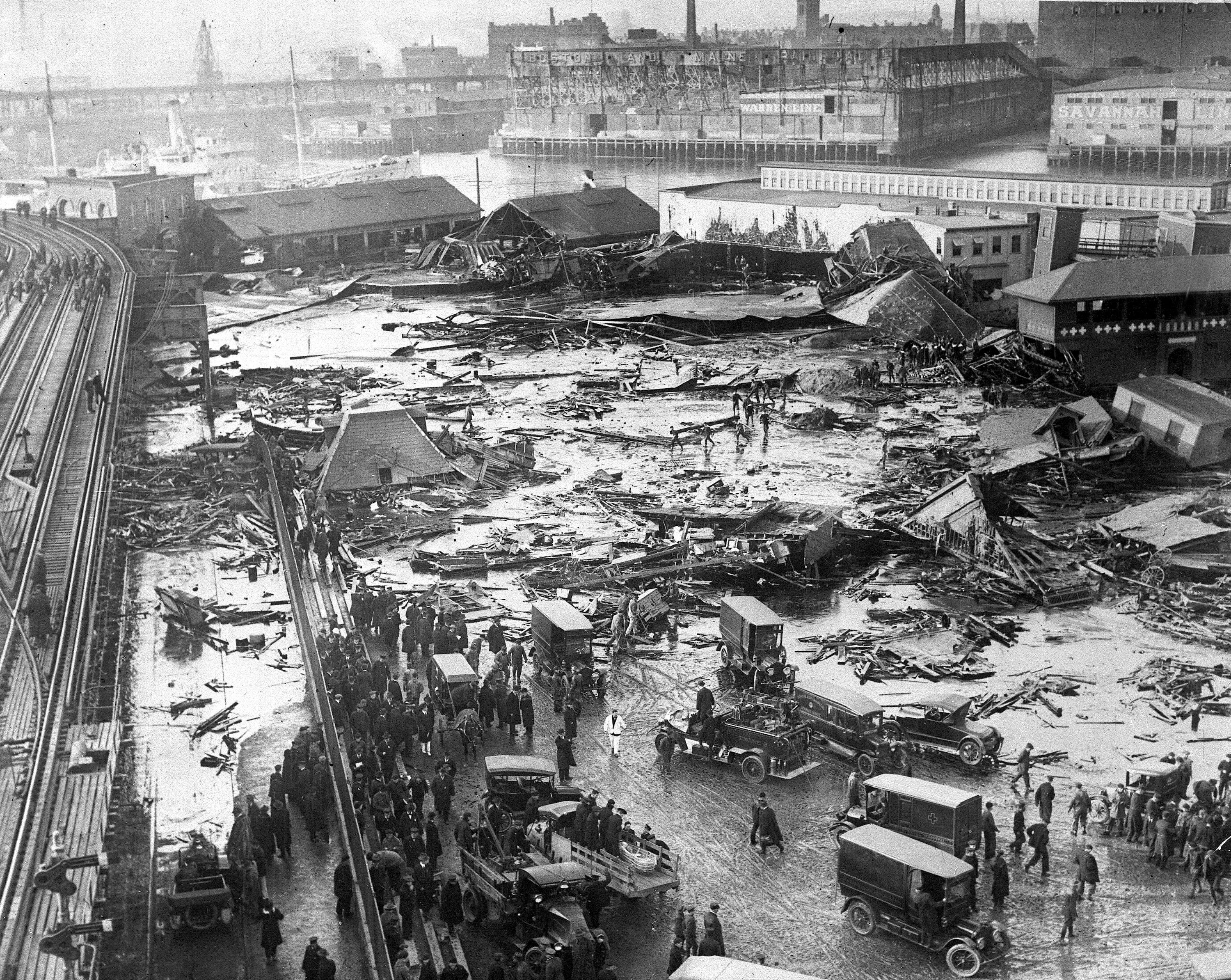The Boston Molasses Disaster

Image: Wikimedia commons. The January 16, 1919 edition of the Boston Post.
On January 15, 1919, a rapid rise in temperature probably caused an increase in pressure inside the Purity Distilling Company's 2.3 million-gallon storage tank on Boston's waterfront. As pressure inside the tank increased, eyewitnesses reported hearing a sound like a machine gun firing as the tank's rivets popped out, and feeling the ground shake as a 35-foot-high wave of molasses burst out into the neighborhood.
The flood killed 21 people and numerous horses. It also injured 150, and leveled several city blocks. In the disaster's aftermath, knee-deep swamps of molasses hampered rescue efforts substantially. The Harbor was brown with molasses through the following summer. And the city smelled like molasses for decades afterward: some say that on hot days in the North End, you can still smell it. Reporter Edward Park wrote about the disaster in a 1983 article for Smithsonian magazine (link):
I regret that I've never smelled it myself, but I'll try harder to the next time I'm in the neighborhood. Park also goes on to write that his old employer, the Globe, did short memory pieces every ten years to commemorate the event. The molasses disaster was to Boston in 1919 what the I-35 bridge collapse was to Minneapolis in 2007, or what the urban fires of 1976 were to East St. Louis: a spectacular tragedy that the city would never forget, until, inevitably, almost everyone forgot it.As a boy, I never questioned that odor, so strong on hot days, so far-reaching when the wind came out of the east. It was simply part of Boston, along with the swan boats in the Public Gardens and the tough kids swimming in the Frog Pond on the common. But years later, when I was on the staff of the Boston Globe, I asked a colleague about it. We were walking over toward the North End, beyond Hanover Street, and our taste buds were guiding us toward one of the corner trattorias where North End Italians make, I swear, the world's finest pizza, and for once I was annoyed by that other smell - the Boston smell.
"Why does Boston smell of molasses?" I asked my friend.
He looked at me curiously. "Because of the molasses flood, of course," he said.
Park's account was written over twenty five years ago. Has the Globe's interest in memorializing the disaster on each ten-year anniversary faded, like the distinctive smell? Or will another item on the molasses flood run in Thursday's newspaper? I'm hoping for the latter, and will post a link here if I find one.

The aftermath, looking east along Commerical Street towards the Charlestown Bridge. The vaguely cylindrical remnants of the destroyed molasses tank are visible in the upper center of the photo, in front of a largely intact warehouse building. Today, the site is a public park, with a memorial plaque.
Read more about the molasses flood from the Massachusetts Humanities Council...
...and from Wikipedia, which includes the names, ages, and occupations of the disaster's 21 victims.




3 comments:
Christian -
I am so happy you posted this. I used to be obsessed with this when I was in elementary school and I did a series of research projects about it back then.
Wondrous.
Alex
I'm also tickled that there's a brown square marked "Boston Molasses Disaster" on Google Maps - like it's an important navigational landmark.
someone should warn turboglacier. he's been into the stuff all winter. i'm mildly concerned now that he's turned the heat on.
Post a Comment